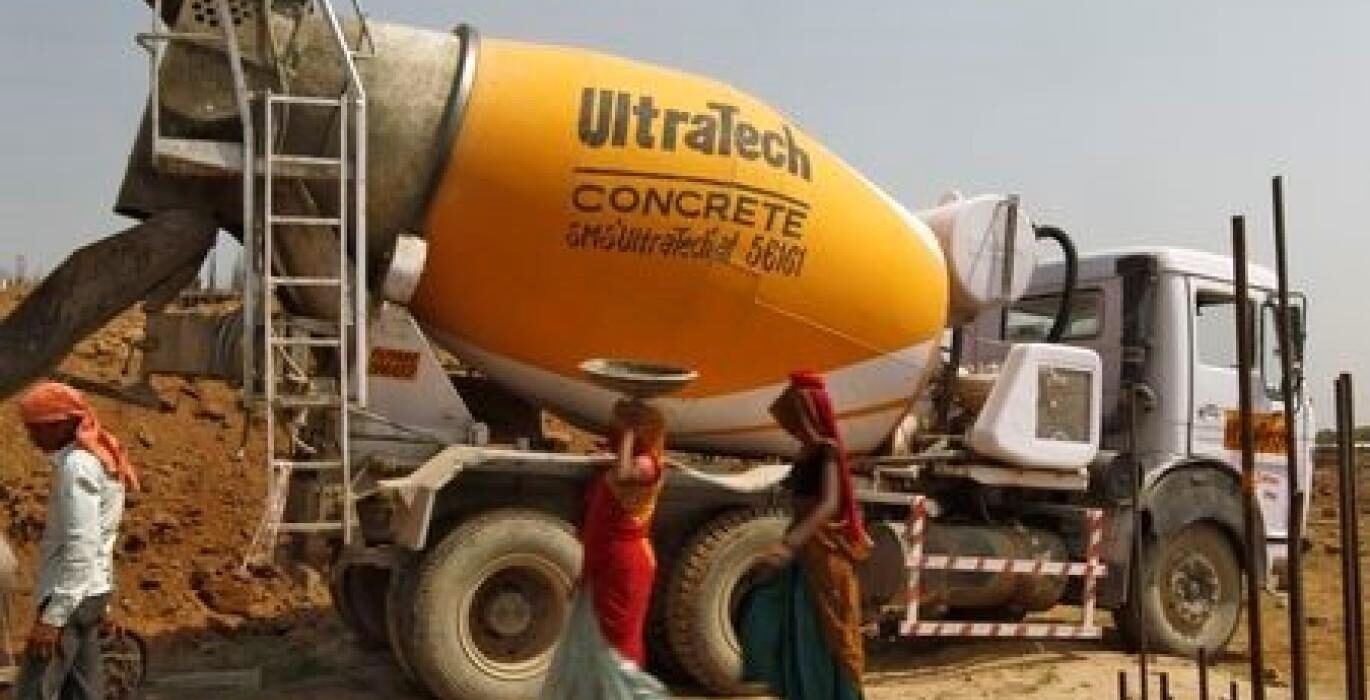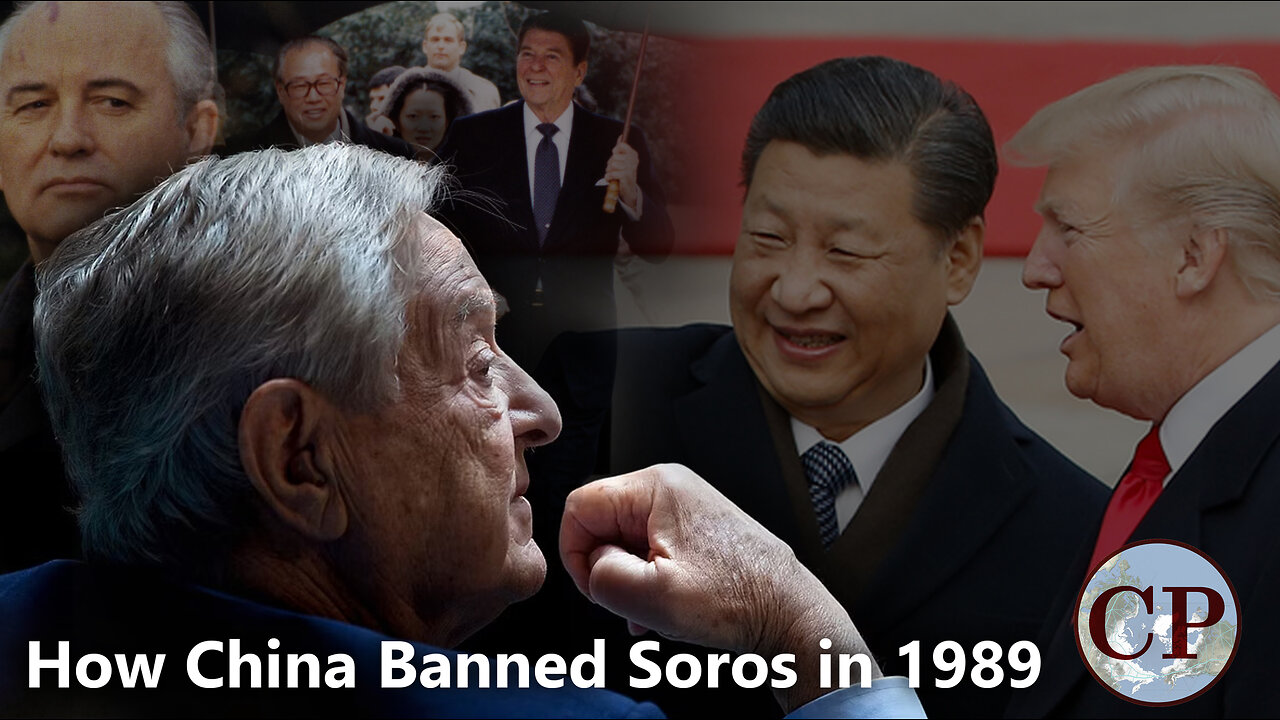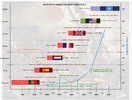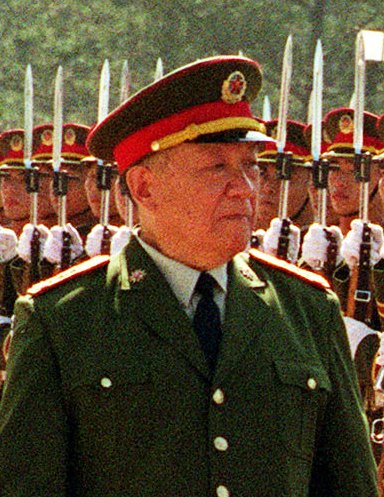 Silk Road Briefing
https://www.silkroadbriefing.com/ne...rics-expansion/news/category/language/italian
Silk Road Briefing
https://www.silkroadbriefing.com/ne...rics-expansion/news/category/language/italian
The New Candidate Countries For BRICS Expansion
Nov 09, 2022Posted by
Silk Road BriefingWritten by
Chris Devonshire-Ellis
If accepted, the new proposed BRICS members would create an entity with a GDP 30% larger than the United States, over 50% of the global population and in control of 60% of global gas reserves.
By
Chris Devonshire-Ellis
The Russian Foreign Minister, Sergey Lavrov has stated that ‘over a dozen’ countries have formally applied to join the BRICS grouping following the groups decision to allow new members earlier this year. The BRICS currently includes Brazil, Russia, India, China and South Africa.
It is not a free trade bloc, but members do coordinate on trade matters and have established a policy bank, the
New Development Bank, (NDB) to coordinate infrastructure loans. That was set up in 2014 in order to provide alternative loan mechanisms from the IMF and World Bank structures, which the members had felt had become too US-centric. The
Asian Infrastructure Investment Bank (AIIB) was set up by China at about the same time for largely the same reasons and to offer alternative financing than that provided by the IMF and World Banks, which were felt to impose political reform policies designed to assist the United States in return for providing loans. Both the NDB and AIIB banks are Triple A rated and capitalised at US$100 billion. The NDB bank shares are held equally by each of the five members. In total, the BRICS grouping as it currently stands accounts for over 40% of the global population and nearly a quarter of the world’s GDP. The GDP figure is expected to double to 50% of global GDP by 2030. Expanding BRICS will immediately accelerate that process.
Concerning a BRICS expansion, Lavrov stated that
Algeria, Argentina, and Iran had all applied, while it is already known that Saudi Arabia, Türkiye, Egypt and Afghanistan are interested, along with
Indonesia, which is expected to make a formal application to join at the upcoming G20 summit in Bali.
Other likely contenders for membership include Kazakhstan,
Nicaragua, Nigeria, Senegal, Thailand and the United Arab Emirates. All had their Finance Ministers present at the BRICS Expansion dialogue meeting held in May.
We can examine the basic economic data of the proposed new BRICS members as follows. GDP figures given are nominal, 2022 growth rates are based on the first 9 months of the year from data issued by the respective Central Banks.
Afghanistan
GDP: USD21.5 billion
GDP Per Capita: USD520
2022 Growth Rate: 2%
Population: 40 million
Afghanistan is one of the poorest countries in the world, shattered by decades of war. Yet maintaining peace and rebuilding infrastructure and regional trade connectivity are crucial to the development of Central Asia, and Afghanistan’s membership of an expanded BRICS will provide much needed additional security. The United States has frozen all Afghani assets held overseas for reparations for 9-11, joining BRICS will give it access to new funding and redevelopment sources.
Afghanistan is an observer state to the
Shanghai Cooperation Organisation which includes China, India, Kazakhstan, Kyrgyzstan, Pakistan, Russia, Tajikistan and Uzbekistan as full members, while Armenia, Azerbaijan, Bahrain, Belarus, Cambodia, Egypt, Kuwait, Maldives, Mongolia, Myanmar, Nepal, Saudi Arabia, Sri Lanka, Turkiye, Turkmenistan, Qatar and the United Arab Emirates are all in various status as SCO dialogue partners and observers.
It is also a member of the
SAARC South Asian trade bloc which includes Bangladesh, Bhutan, India, Maldives, Nepal, Pakistan and Sri Lanka. Afghanistan’s largest trade partner is India, followed by Pakistan, China, Turkiye and the UAE.
Algeria
GDP: USD168 billion
GDP Per Capita: USD3,700
2022 Growth Rate: 2.3%
Population: 45 million
In terms of market size, Algeria has the tenth largest proven natural gas reserves globally, is the world’s sixth-largest gas exporter, and has the world’s third-largest untapped shale gas resources. Algeria is a member of
OPEC, which also includes Congo, Ecuador, Equatorial Guinea, Gabon, Iran, Iraq, Kuwait, Libya, Nigeria, Saudi Arabia, the UAE and Venezuela, as well as the
Arab Trade Zone which also includes Bahrain, Egypt, Iraq, Jordan, Kuwait, Lebanon, Libya, Morocco, Oman, Palestine, Qatar, Saudi Arabia, Sudan, Syria, Tunisia, the UAE and Yemen. Algeria is also a member of the
African Continental Free Trade Agreement (AfCFTA) which reduces tariffs to zero on 98% of all intra-African trade. Algeria’s largest trade partners are Italy, France, Spain, the United States and Brazil, although it has shown a recent push to be more involved in non-Western markets.
Argentina
GDP: USD491.5 billion
GDP Per Capita: USD10,730
2022 Growth Rate: 3.6%
Population: 46 million
Argentina is an agricultural economy and major global supplier. It is the second largest member of the Latin American
Mercosur trade bloc which also includes Brazil, Paraguay, and Uruguay and which has additional trade agreements with most other LatAm nations. Mercosur also has trade agreements with India and the
Southern African Customs Union, which includes Botswana, Eswatini, Lesotho, Namibia and South Africa. Argentina’s major trade partners include Brazil, followed by China, the United States, Germany, Chile, Paraguay, Vietnam, and Germany.
Egypt
GDP: USD404 billion
GDP Per Capita: USD3,880
2022 Growth Rate: 6.6%
Population: 104 million
Egypt is an energy and agricultural play, with important exports including petroleum and petroleum products, followed by raw cotton, cotton yarn, and textiles. Raw materials, mineral and chemical products, and capital goods are also exported. Among agricultural exports are rice, onions, garlic, and citrus fruit. Egypt is a member of the
Arab Trade Zone which also includes Algeria, Bahrain, Iraq, Jordan, Kuwait, Lebanon, Libya, Morocco, Oman, Palestine, Qatar, Saudi Arabia, Sudan, Syria, Tunisia, the UAE and Yemen. Egypt is also a member of the
African Continental Free Trade Agreement (AfCFTA) which reduces tariffs to zero on 98% of all intra-African trade.
Egypt is a dialogue partner to the
Shanghai Cooperation Organisation which includes China, India, Kazakhstan, Kyrgyzstan, Pakistan, Russia, Tajikistan and Uzbekistan as full members, while Afghanistan, Armenia, Azerbaijan, Bahrain, Belarus, Cambodia, Kuwait, Maldives, Mongolia, Myanmar, Nepal, Saudi Arabia, Sri Lanka, Turkiye, Turkmenistan, Qatar and the United Arab Emirates are all in various status as SCO dialogue partners and observers. Egypt’s most important trading partners include China, the United States, Italy, Germany, and the Gulf Arab countries.
Indonesia
GDP: USD1.2 trillion
GDP Per Capita: USD4,300
2022 Growth Rate: 5.4%
Population: 276 million
Indonesia is a member of the South-East Asian
ASEAN free trade bloc, which also includes Brunei, Cambodia, Laos, Malaysia, Myanmar, Philippines, Singapore, Thailand and Vietnam. Previously a member of OPEC, Indonesia’s main trade is in oil and gas, minerals, crude palm oil, electrical appliances and rubber products. Via ASEAN it has Free Trade Agreements with Australia, New Zealand, Japan, South Korea, China, Hong Kong and India. Indonesia is also a signatory to the
RCEP FTA between ASEAN and Australia, China, Japan, New Zealand, and South Korea and has an agreement with Chile. Indonesia is negotiating other FTAs with the European Union (EU), India, Tunisia, and Turkey as well as reviewing its trade agreements with Japan and Pakistan. Its main trade partners are China, followed by the United States, Japan, Singapore and India.
Iran
GDP: USD231.5 billion
GDP Per Capita: USD2,760
2022 Growth Rate: 3.7%
Population: 85 million
Iran has the equivalent of over 1.2 trillion barrels of oil and gas and is the largest holder of hydrocarbon reserves in the world. Heavily sanctioned by the United States and Europe over plans for it to develop nuclear power plants (The West fears these could be used to make nuclear weapons capable of hitting Israel), Iran is however a member of
OPEC, which also includes Algeria, Congo, Ecuador, Equatorial Guinea, Gabon, Iraq, Kuwait, Libya, Nigeria, Saudi Arabia, the UAE and Venezuela. It is also about to become a full member of the
Shanghai Cooperation Organisation which includes China, India, Kazakhstan, Kyrgyzstan, Pakistan, Russia, Tajikistan and Uzbekistan as full members, while Afghanistan, Armenia, Azerbaijan, Bahrain, Belarus, Cambodia, Egypt, Kuwait, Maldives, Mongolia, Myanmar, Nepal, Saudi Arabia, Sri Lanka, Turkiye, Turkmenistan, Qatar and the United Arab Emirates are all in various status as SCO dialogue partners and observers.
Iran has recently stated it will link its
energy supply chains to SCO members electricity networks, and is the main transit focus for the International North-South Transportation Corridor (INSTC) which
links trade from Europe, Russia, Turkiye, the Caucasus and Central Asia through to markets in East Africa, the Middle East and South Asia.
Iran has a Free Trade Agreement with the Eurasian Economic Union (EAEU) which includes Armenia, Belarus, Kazakhstan, Kyrgyzstan and Russia. Its main trade partners are China, UAE, India, Turkiye, Russia and Germany.
Kazakhstan
GDP: USD191 billion
GDP Per Capita: USD10,100
2022 Growth Rate: 3.2%
Population: 19 million
Kazakhstan has an export-oriented economy that is highly dependent on shipments of oil and related products (58 percent of total exports). In addition to oil, its main export commodities include natural gas, ferrous metals, copper, aluminum, zinc and uranium. Kazakhstan is the world’s 9th-largest coal producer, and ranks 17th in the world for crude oil production, and 24th for natural gas.
Kazakhstan is a full member of the
Shanghai Cooperation Organisation which also includes China, India, Kyrgyzstan, Pakistan, Russia, Tajikistan and Uzbekistan as full members, with Iran about to join them, while Afghanistan, Armenia, Azerbaijan, Bahrain, Belarus, Cambodia, Egypt, Kuwait, Maldives, Mongolia, Myanmar, Nepal, Saudi Arabia, Sri Lanka, Turkiye, Turkmenistan, Qatar and the United Arab Emirates are all in various status as SCO dialogue partners and observers. Kazakhstan is a full member of the Eurasian Economic Union (EAEU) trade bloc which also includes Armenia, Belarus, Kyrgyzstan and Russia. Kazakhstan’s largest trade partners are China, Russia, Italy, Netherlands and Uzbekistan.
Nicaragua
GDP: USD14 billion
GDP Per Capita: USD2,100
2022 Growth Rate: 4.3%
Population: 7 million
Nicaragua is sanctioned by the United States for its ties with Cuba and Russia. It is a mining play and the leading gold-producing country in Central America and has a Free Trade Agreement with the ALBA bloc, which includes Cuba, Venezuela, Dominica, Antigua & Barbuda, Saint Vincent & the Grenadines, Granada, and Saint Kitts & Nevis, and is therefore an influential player in the Caribbean. That is useful for China especially as it vies with Taiwan for recognition – the Caribbean being one of the few remaining regions where Taiwan retains full diplomatic relations. Nicaragua’s main exports are Gold, Coffee, Insulated Wire and Frozen Bovine Meat. Its main trade partners are the United States, followed by China, Mexico, El Salvador, Honduras and Costa Rica.
Nigeria
GDP: USD441 billion
GDP Per Capita: USD2,100
2022 Growth Rate: -12%
Population: 211 million
Nigeria is the largest oil and gas producer in Africa and among the 10th largest in the world for both. It is a member of
OPEC, which also includes Algeria, Congo, Ecuador, Equatorial Guinea, Gabon, Iran, Iraq, Kuwait, Libya, Saudi Arabia, the UAE and Venezuela. It is additionally a member of the
African Continental Free Trade Agreement (AfCFTA) which reduces tariffs to zero on 98% of all intra-African trade. Its main trade is in Crude Petroleum, Petroleum Gas, Refined Petroleum, as well as in shipbuilding and scrap vessels. Nigeria’s main trade partners are India, Spain, Netherlands, China and South Africa.
Saudi Arabia
GDP: USD833.5 billion
GDP Per Capita: USD23,600
2022 Growth Rate: 8%
Population: 35 million
Saudi Arabia possesses around 17% of the world’s proven petroleum reserves. Apart from petroleum, the Kingdom’s other natural resources include natural gas, iron ore, gold, and copper. It is a member of
OPEC, which also includes Algeria, Congo, Ecuador, Equatorial Guinea, Gabon, Iran, Iraq, Kuwait, Libya, Nigeria, the UAE and Venezuela, as well as the
Arab Trade Zone which also includes Algeria, Bahrain, Egypt, Iraq, Jordan, Kuwait, Lebanon, Libya, Morocco, Oman, Palestine, Qatar, Sudan, Syria, Tunisia, the UAE and Yemen.
Saudi Arabia is also a member of the
Gulf Cooperation Council (GCC) a regional, intergovernmental, political, and economic union comprising Bahrain, Kuwait, Oman, Qatar, and the UAE. The GCC currently has a Free Trade Agreement with Singapore and is negotiating FTA with China and India.
Saudi Arabia is additionally a dialogue partner of the
Shanghai Cooperation Organisation and has made in known it wishes to become a full member. The SCO also includes China, India, Kyrgyzstan, Pakistan, Russia, Tajikistan and Uzbekistan as full members, with Iran about to join them, while Afghanistan, Armenia, Azerbaijan, Bahrain, Belarus, Cambodia, Egypt, Kuwait, Maldives, Mongolia, Myanmar, Nepal, Sri Lanka, Turkiye, Turkmenistan, Qatar and the United Arab Emirates are all in various status as SCO dialogue partners and observers. Saudi Arabia’s main trade partners are the UAE, China, India and Singapore. The Kingdom signed off a
US$400 billion strategic investment plan with China earlier this year.
Senegal
GDP: USD27.7 billion
GDP Per Capita: USD1,606
2022 Growth Rate: 1.6%
Population: 17 million
Senegal is a medium capacity gold mining and energy player, with reserves in gold, oil and gas. The energy industry is at a growth stage as reserves have only recently been found. This is likely to transform its economy. Senegal’s main exports include gold, refined petroleum, frozen fish, phosphoric acid (used in fertilizers) and ground nuts. It is also a member of the
African Continental Free Trade Agreement (AfCFTA) which reduces tariffs to zero on 98% of all intra-African trade. Senegal’s main trade partners are neighbouring Mali, as well as India, China, Australia and Switzerland.
Thailand
GDP: USD506 billion
GDP Per Capita: USD7,250
2022 Growth Rate: 3.3%
Population: 70 million
Thailand is one of
ASEAN’s largest economies, with the free trade bloc also including Brunei, Cambodia, Laos, Indonesia, Malaysia, Myanmar, Philippines, Singapore, and Vietnam. Via ASEAN it has Free Trade Agreements with Australia, New Zealand, Japan, South Korea, China, Hong Kong and India, and agreements with Chile, and Peru. Thailand is also a signatory to the
RCEP FTA between ASEAN and Australia, China, Japan, New Zealand, and South Korea. The country mainly exports manufactured goods (86% of total shipments) with electronics (14%, vehicles (13%), machinery and equipment (7.5%) and foodstuffs (7.5%) being the most important. Agricultural goods, mainly rice and rubber, account for 8% of total shipments. Thailand’s main trade partners are the United States, China, Japan, Hong Kong and Vietnam.
United Arab Emirates
GDP: USD36 billion
GDP Per Capita: USD36,300
2022 Growth Rate: 8.2%
Population: 10 million
The United Arab Emirates (UAE) is among the world’s ten largest oil producers. About 96% of the country’s roughly 100 billion barrels of proven oil reserves are located in Abu Dhabi, ranking 6th worldwide. The UAE is a member of
OPEC, which also includes Algeria, Congo, Ecuador, Equatorial Guinea, Gabon, Iran, Iraq, Kuwait, Libya, Nigeria, Saudi Arabia, and Venezuela, as well as the
Arab Trade Zone which also includes Algeria, Bahrain, Egypt, Iraq, Jordan, Kuwait, Lebanon, Libya, Morocco, Oman, Palestine, Qatar, Saudi Arabia, Sudan, Syria, Tunisia, and Yemen.
It is also a member of the
Gulf Cooperation Council (GCC) a regional, intergovernmental, political, and economic union comprising Bahrain, Kuwait, Oman, Qatar, and Saudi Arabia. The GCC currently has a Free Trade Agreement with Singapore and is negotiating FTA with China and India.
The UAE is a dialogue partner to the
Shanghai Cooperation Organisation which includes China, India, Kazakhstan, Kyrgyzstan, Pakistan, Russia, Tajikistan and Uzbekistan as full members, while Afghanistan, Armenia, Azerbaijan, Bahrain, Belarus, Cambodia, Kuwait, Maldives, Mongolia, Myanmar, Nepal, Saudi Arabia, Sri Lanka, Turkiye, Turkmenistan, and Qatar are all in various status as SCO dialogue partners and observers.
The United Arab Emirates’ economy is highly dependent on the exports of oil and natural gas (40% of total exports). Other exports include pearls and other precious metals and stones (28%), machinery, sound recorders and parts (9%) and transport vehicles (6%). The electric vehicle industry is also becoming centred in part around the UAE. The Emirates largest trade partners are Saudi Arabia, Iraq, India and Switzerland.
Summary
An expanded BRICS including the nations above together with Brazil, Russia, India, China and South Africa would possess about 45% of known global oil reserves and over 60% of all known global gas reserves. Its combined GDP as at today would amount to USD29.35 trillion, making it considerably larger than the United States economy at USD23 trillion and double that of the European Union’s USD14.5 trillion.
The new members identified above would add just under 1 billion consumers to the BRICS+ family, for a total of 4.257 billion, or just over 50% of the total global population in 2022.
Of note as concerns the new prospective members are the apparent qualifying criteria: possession of large volumes of global natural resources. I have indicated the energy plays, however these also extend to majority possession of nearly all global resources, including precious metals, rare earths, other rare minerals, energy resources such as coal and solar power, timber, agricultural land, fisheries, and fresh water.
Soft power also resides in the numerous political and trade blocs that permeate amongst members, key among them being the Shanghai Cooperation Organisation, along with strategic OPEC decision makers. Hand in hand with these are significant free trade blocs: ASEAN, Mercosur, the Gulf Cooperation Council, the Arab Trade Zone, Eurasian Economic Union and the African Continental Free Trade Area in addition to RCEP and to a lesser degree, the regional politically influential ALBA and SAARC.
Such a grouping is geo-physically diverse as well, with BRICS+ potential members able to wield considerable influence in their own backyard: Argentina, and Brazil in Latin America, Nicaragua in Central America, Algeria, Egypt, Iran, Saudi Arabia and the UAE in MENA, Nigeria, Senegal and South Africa in Africa, Afghanistan, Kazakhstan and Russia in Central Asia, India, Indonesia and Thailand from South East Asia, and China in East Asia. All of course are members of China’s Belt and Road Initiative, and likely to influence other regional BRI countries in due course. Many other nations have signed BRI agreements and have increasingly close trade ties with China and Russia. That means these additional future potential candidates could be expected to later include:
Central America: Costa Rica, El Salvador, Guatemala, Honduras, and Panama
Latin America: Bolivia, Chile, Cuba, Ecuador, Peru, Uruguay, and Venezuela
Caucasus: Azerbaijan
Central Asia: Mongolia, Tajikistan, Turkmenistan, and Uzbekistan
South Asia: Pakistan, Sri Lanka, and Vietnam
Readers can make up their own minds concerning the implications of the development of the BRICS+ group and the impact on global trade – and future supply chains. However, it is apparent that while the current focus has been on the shifts created by the West’s imposition of sanctions on Russia, and trade sanctions upon China (including semiconductors) a rather more significant change in global trade and supply chains has been simultaneously occurring – and one likely to have even more profound implications.
Chris Devonshire-Ellis is the Chairman of Dezan Shira & Associates and a global thought leader. His views and opinions are sought after on a global basis with recent analysis appearing in Barrons, the Middle East Institute and Al-Jazeera among many others. He has written over 30 books on China, Asian and Global Trade. He may be contacted at asia@dezshira.com






















